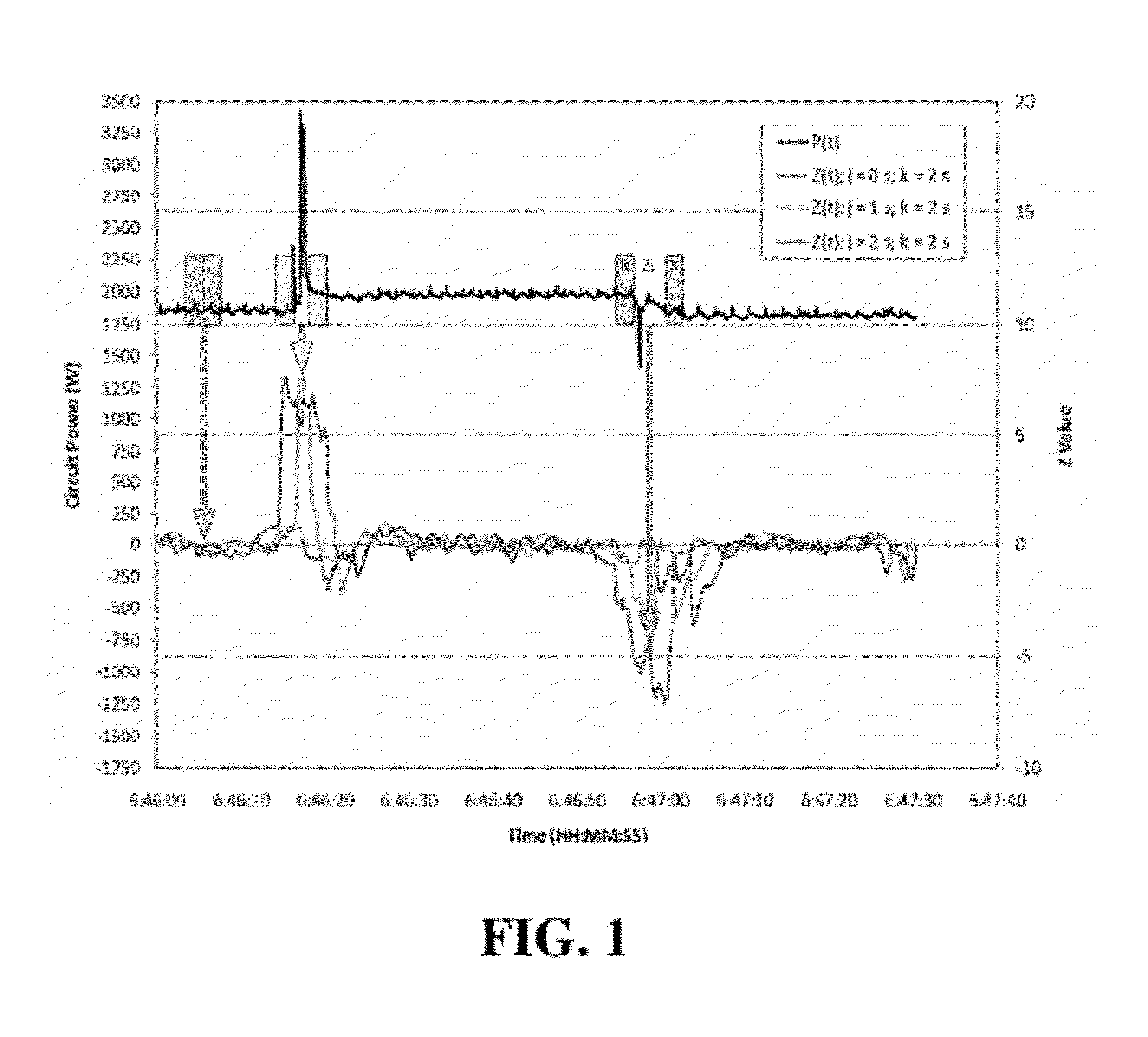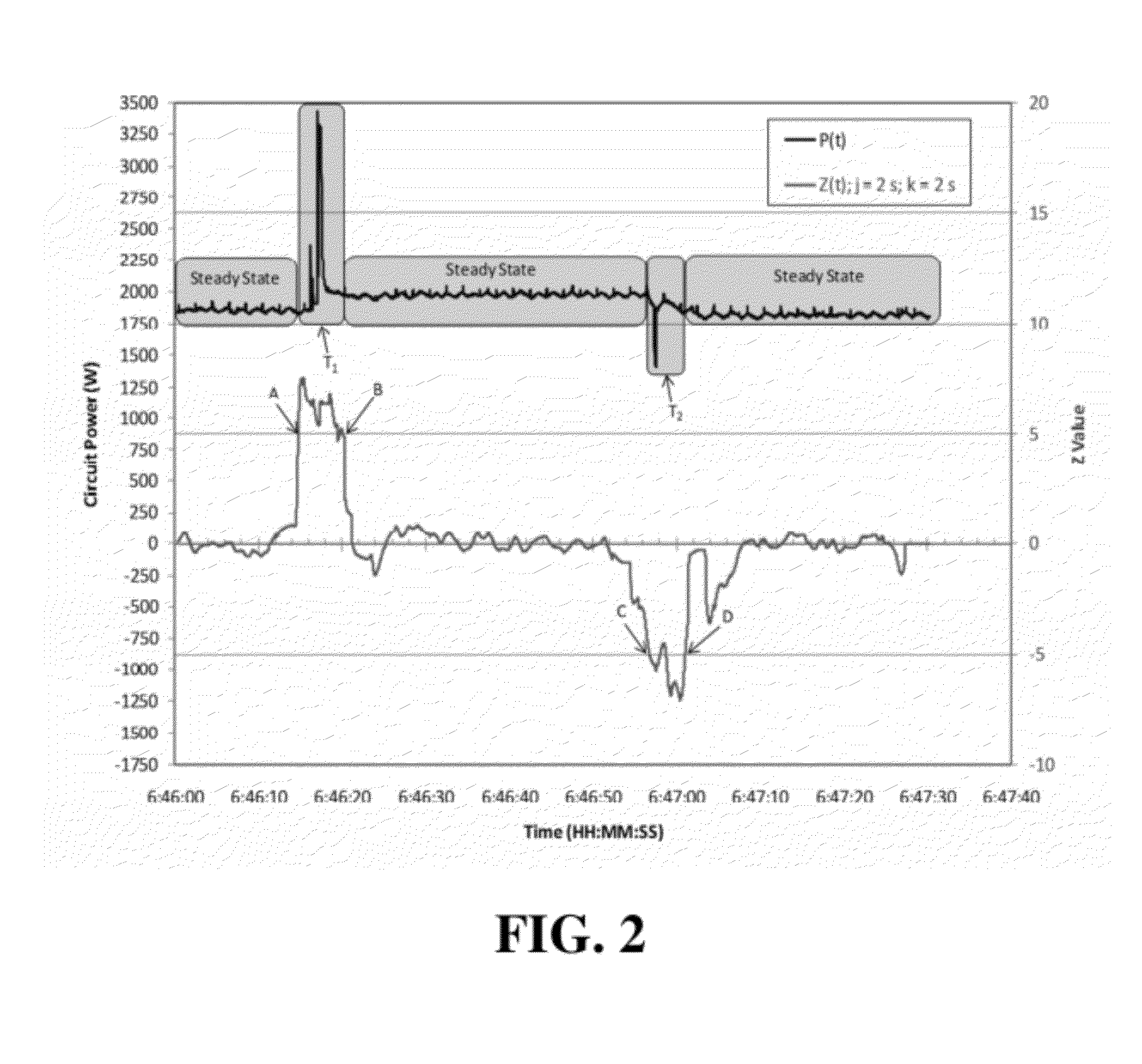Signal identification methods and systems
a signal identification and signal technology, applied in the direction of moving iron instruments, instruments, electric devices, etc., can solve the problems of inability to perform, inability to locate, and need to be apprehended
- Summary
- Abstract
- Description
- Claims
- Application Information
AI Technical Summary
Benefits of technology
Problems solved by technology
Method used
Image
Examples
example 1
[0250]This example shows the data generated during the use of a disclosed electrical load disaggregation system (referred to as a Utility Accountant (UA)) to monitor energy consumption in a residential setting.
[0251]Table 21 lists the various high energy appliances isolated by the UA on each leg or on both legs in the case of the 240 V appliances.
[0252]The “Baseline” energy figure shown is the amount of energy that was consumed on that leg by the “always on” appliances. Appliances can only be isolated by the UA if they change state; thus the always on appliances must be aggregated into a single bundle. Knowing the energy use of all always on appliances is useful for a consumer to identifying and mitigating these wasteful appliances.
TABLE 21Report of Utility Account disaggregation performance for House #1End Sep. 21, 2009 5:00:00 PM4.9 DaysStart Sep. 16, 2009%Annual7:00:00 PMPowerEnergyEnergyCost @House 1Appliance Name(W)Events(kWh)on Leg$.12 / kWh240 VHot Tub Heater60067429.9 99%$256L...
example 2
[0259]This example describes use of a disclosed electrical load disaggregation system (referred to as a Utility Accountant (UA)) and the use of such in Quick Serve facilities (including fast-food restaurants, gas stations, and mini-marts).
[0260]The average energy bill for a 3,000 square foot Quick Serve building is ˜$2,500 per month. The $6,000 / year potential savings (based on 20% energy reduction) is much greater than in the residential market with savings of ˜$300 / year for the average US household.
[0261]The clustering algorithm can be modified so that resistive transitions are clustered separately. The energy datasets collected in Example 1 show that numerous appliances can be classified as purely resistive in that they draw current proportionally to the real time voltage on the circuit. These appliances tended to be heaters or incandescent lights. The UA load disaggregation algorithm isolates appliances based on differences in their power signature. Resistive appliance signatures...
example 3
[0262]This example describes an energy management application which allows energy consumption to be identified and managed.
[0263]As illustrated in FIG. 18, data flowing from an installed device is transmitted, such as wirelessly transmitted, to a second device such as a mobile device, including, but not limited to laptop computer including an energy management application to allow energy consumption to be identified and managed. The energy management application is customized for the specific user—e.g., commercial, home, and / or industrial users. For example, the energy management application allows a user to generate reports so that they are most meaningful for such user (e.g., appliance loads are grouped according to business unit (such as gas pumps, slot machines; food storage, etc.), appliance type (HVAC, refrigeration, lighting, cooking), location (such as a parking lot, store front, dining room, kitchen, etc.) or any other criteria). FIG. 19 is a screen shot of an initial login...
PUM
 Login to View More
Login to View More Abstract
Description
Claims
Application Information
 Login to View More
Login to View More - R&D
- Intellectual Property
- Life Sciences
- Materials
- Tech Scout
- Unparalleled Data Quality
- Higher Quality Content
- 60% Fewer Hallucinations
Browse by: Latest US Patents, China's latest patents, Technical Efficacy Thesaurus, Application Domain, Technology Topic, Popular Technical Reports.
© 2025 PatSnap. All rights reserved.Legal|Privacy policy|Modern Slavery Act Transparency Statement|Sitemap|About US| Contact US: help@patsnap.com



